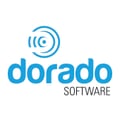This article describes the steps for a fresh install and Upgrade from prior versions.
CruzOC – Installation Instructions
New Installation
The standard product is provided in a single install package for Windows or Linux and is also the same package used for new or trial installs. You simply execute the .exe for windows or .bin for Linux and the install wizard will walk through the necessary steps. You may install either package on your physical or virtual server. A Linux OVA is also available for import on a VMware host. For additional information refer to CruzOC installation Tips.
Upgrades
Before Upgrading
*****************************************************************************************
WARNING: These pre-upgrade steps are mandatory and standard for ANY/ALL upgrades including path updates. These will ensure that the pre-upgrade state of the system is recoverable in the event of an upgrade failure.
For any upgrade to 10.0.5 it is highly recommended that you are already on on the 10.0.3 version. If upgrading from an earlier version please refer to the release notes for the upgrade path for specific versions of Cruz.
***If you are currently a fabric user, please contact support before upgrading.***
****************************************************************************************
Backup Database
- If using a virtualized server, take a snapshot of your system prior to upgrade or
- Backup your databases
- Open command line window or linux console and source Environment Variables:
- type oware on Windows or . /etc/.dsienv for Linux
- Execute the following to export your DB:
- mysqldump -u root -pdorado --single-transaction --all-databases --triggers --routines --events >all_databases.sql
- Open command line window or linux console and source Environment Variables:
NOTE: dorado is default password, if it has been changed, please provide changed password mysqldump file will be located in directory where mysqldump file was executed from
Upgrade Steps
The standard product upgrade is provided in a single install package and is also the same package used for fresh or trial installs. You simply execute the .exe or .bin and the install wizard will walk through the necessary steps. If a prior install is detected the installation will be in upgrade mode and all configuration, settings, and databases will be preserved.
-
- If you are upgrading the OVA (Virtual Appliance), you will need to apply the Linux version of the new software package. When upgrading the OVA, the install wizard is Linux CLI based and will have CLI prompts for the needed inputs.
EOL/EOS - Current product support includes product releases for the last two major releases or the last two years. Defects or other resolved issues may be backported/patched or supported at Dorado Software’s discretion if they are within the last two major releases or two-year time frame. Prior releases are considered EOL/EOS and may be supported at Dorado's discretion; however, defects or access to new features will generally require an upgrade to a supported version.
- If you are upgrading the OVA (Virtual Appliance), you will need to apply the Linux version of the new software package. When upgrading the OVA, the install wizard is Linux CLI based and will have CLI prompts for the needed inputs.
Please refer to the Upgrade Path Matrix in this document for specific information on your upgrade path. Please be aware that some releases had very specific instructions required for upgrade. Refer the release notes for the specific release for guidance. For example the 10.0.3 release had critical step required for successful upgrade to 10.0.3.
- X = Supported direct upgrade path and not special steps
- NA = Not Applicable
- NS =Not Supported or not tested. A direct upgrade path may still work but will require you to perform and validated a test upgrade.
- **S Upgrade is Supported and requires manual steps. See steps below.
| Upgrade Path Matrix | |||||||||||
| Dell OpenManage Network Manager / OMNM | Dorado CruzOC | ||||||||||
| Release date | 1-Feb-21 | 1-Jul 2021 | 1-Aug-22 | 28-Feb-23 | |||||||
| Version upgrade to → | 6.5.2 | 6.5.3 | 8.0 | 8.0.1 | 9.0.0 | 9.0.1 | 10 | 10.0.1 | 10.0.2* | 10.0.3 | 10.0.5 |
| From | |||||||||||
| ↓ | |||||||||||
| 6.5 | X | X | NS | NS | NS | NS | NS | NS | NS | NS | NS |
| 6.5.2 | NA | X | X | X | NS | NS | NS | NS | NS | NS | NS |
| 6.5.3 | NA | X | X | NS | NS | NS | NS | NS | NS | NS | |
| 8.0 | NA | X | X | NS | NS | NS | NS | NS | NS | ||
| 8.0.1 | NA | X | X | NS | NS | NS | NS | NS | |||
| 9.0.0 | NA | X | X | NS | NS | NS | NS | ||||
| 9.0.1 | NA | X | X | X | S** | NS | |||||
| 10.0.0 | NA | X | X | S** | NS | ||||||
| 10.0.1 | NA | X | S** | NS | |||||||
| 10.0.2 | NA | S** | NS | ||||||||
| 10.0.3 | NA | S** | |||||||||
| 10.0.5 | NA | ||||||||||
* v10.0.2 was a limited release and not generally available. Additional mysql 8 migration step are not required since 10.0.2.x is already using mysql 8
